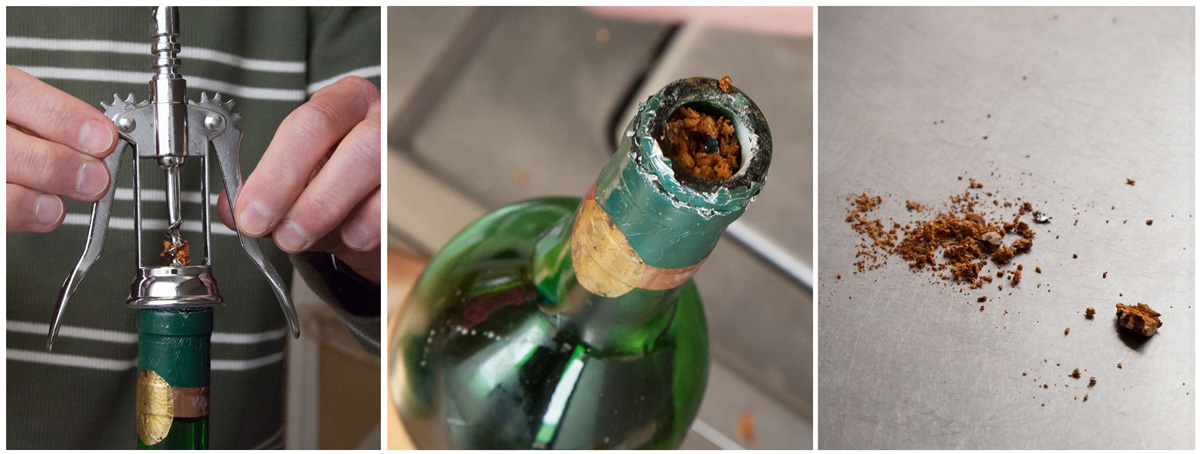This post is part two of the “No tannins at all, and very little fruit” post from Sept. 6, 2013. The first post outlines how I approached photographing the bottle of wine from the Archives; this post details the uncorking of the bottle and what we found inside.
Once the photography had been completed, it was time to empty out the wine and pass the bottle on to the materials conservator. A group of us were on hand for the uncorking: our conservator, university archivist, senior library specialist in manuscripts, and rare book cataloger. It was essential that the most important part of the bottle – the handmade label – remain intact, so the folks removing the cork and emptying the bottle had to be incredibly careful that no liquid came into contact with the label.
Once the seal was removed, it was evident that the cork was indeed the source of the leak, and would be a challenge to extract from the bottle.
Using a variety of tools – from a simple corkscrew to tools from the Conservator’s lab – the team went to work to remove the cork completely.
However, it became clear that the cork was actively disintegrating and salvaging the entire cork would be impossible.

After removing as much of the cork as possible, the decision was made to push the remaining cork into the bottle and pour out the wine. Some samples of the wine were collected, while the rest had to be poured down the sink. We noticed, after looking at the samples in a beaker and a drinking cup, that there was more than a little sediment. A quick taste-test by one of our more adventurous library folks provided the assessment that the almost 50-year-old wine had “no tannins at all, and very little fruit.”



